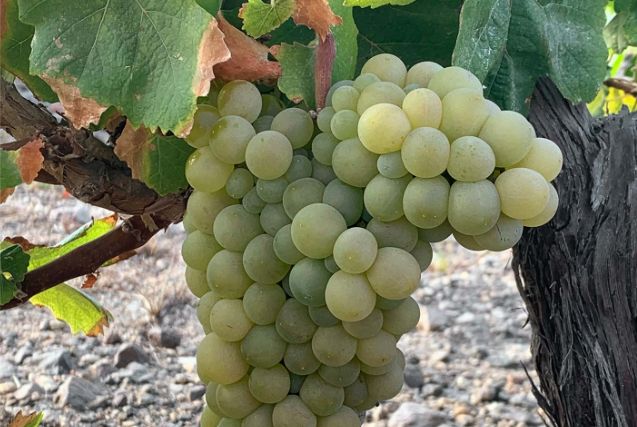
Under Assyrtiko's shadow
Although not as frequently mentioned in wine enthusiast circles, Aidani is one of the most beloved varieties of the Aegean and specifically the Cyclades.
It is considered a native variety of Santorini, although according to some scholars, it originates from the East, specifically Adana, from which it appears to take its name.
Although the percentage of its cultivation in Santorini is small, it is the main production area, while the quantities from Paros and Naxos are also noteworthy. In recent years, due to the efforts of some producers from the rest of Greece to explore the potential of the variety outside the Cyclades, we find it in Attica, the Peloponnese, and even in Northern Greece.
It is a productive variety, resistant to drought, but it is thick-skinned, which makes it susceptible to diseases, mainly downy mildew.
We usually find it in blends of dry white and sweet wines, while there are also some fewer versions with dry rosé wines and some sparkling wines. For a few years now, it has started to be bottled varietally, albeit timidly. It has good aging potential.
It participates in the dry PDO Santorini wines in a percentage of up to 15%, along with Assyrtiko (which must always account for 85% of the composition) and Athiri, while we also find it in the sweet wines of the island, Vinsanto.
It has a pale yellow-green color and aromas of flowers and fruits. On the palate, it has a medium body and medium acidity. This acidity is, in fact, one of the reasons it is used in blends with Assyrtiko, as it rounds out its often "sharp" acidity.
It is a particularly pleasant companion to salads containing legumes, risotto, pasta with white sauces, poultry, seafood, and fatty fish.


